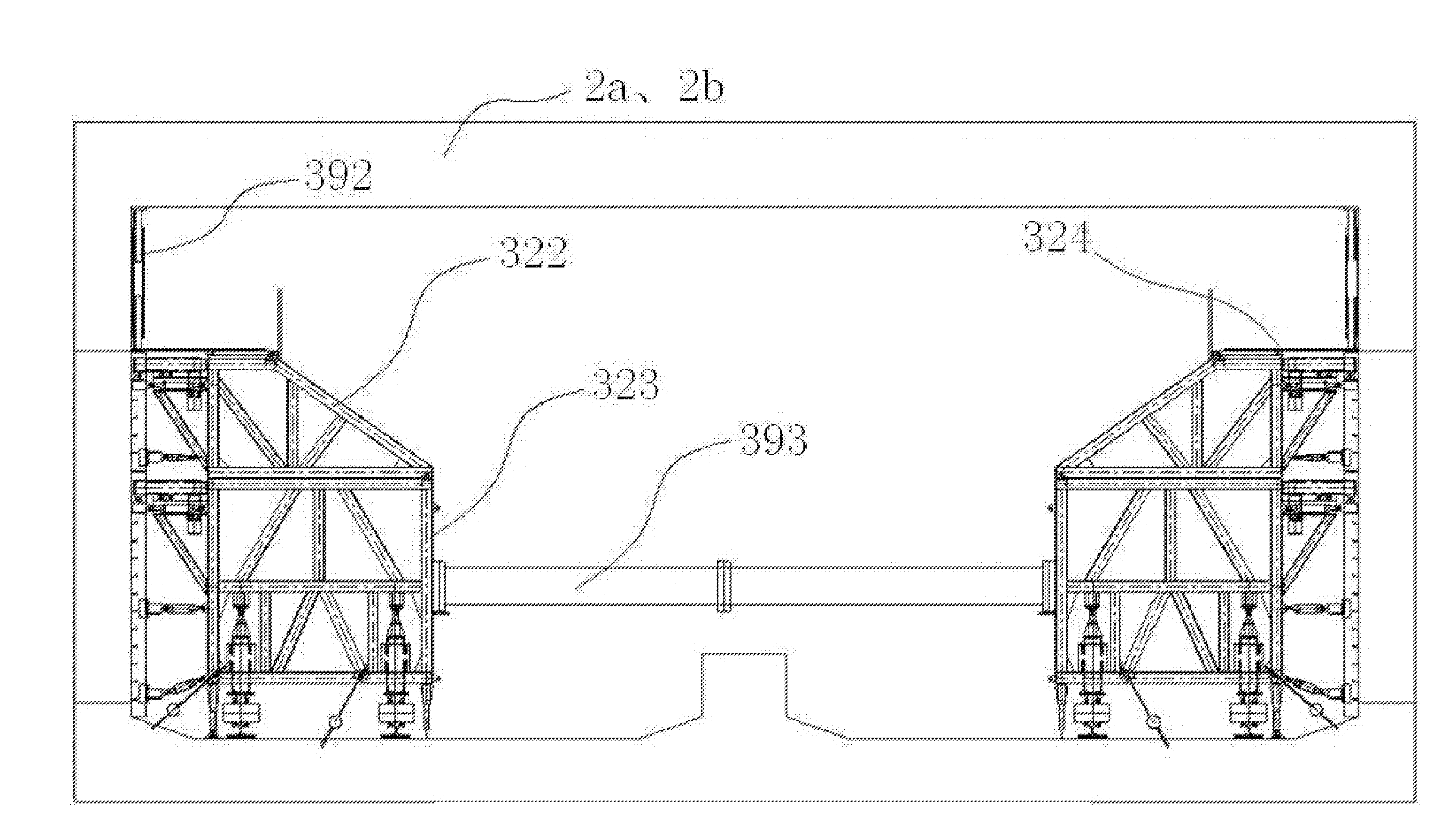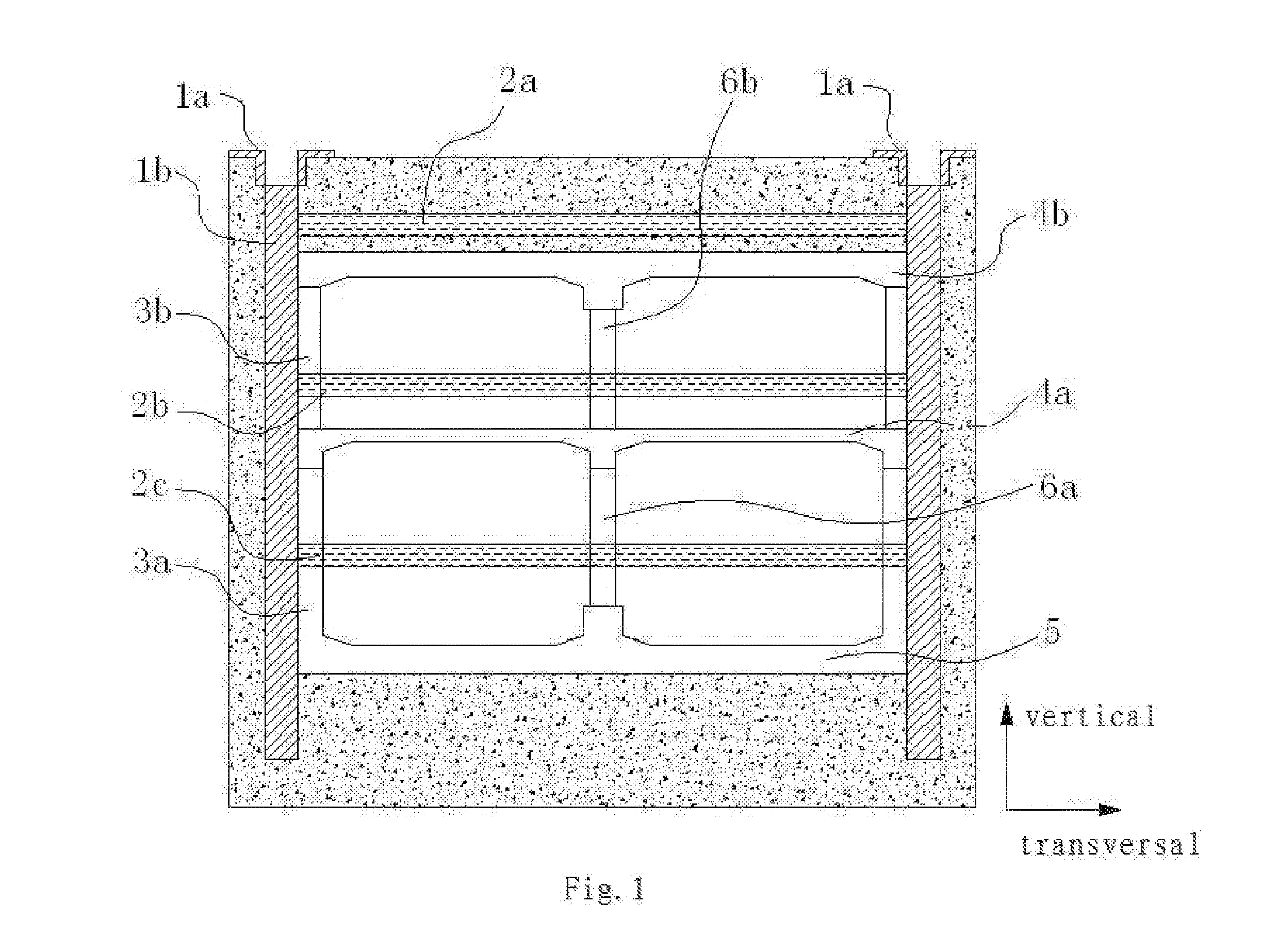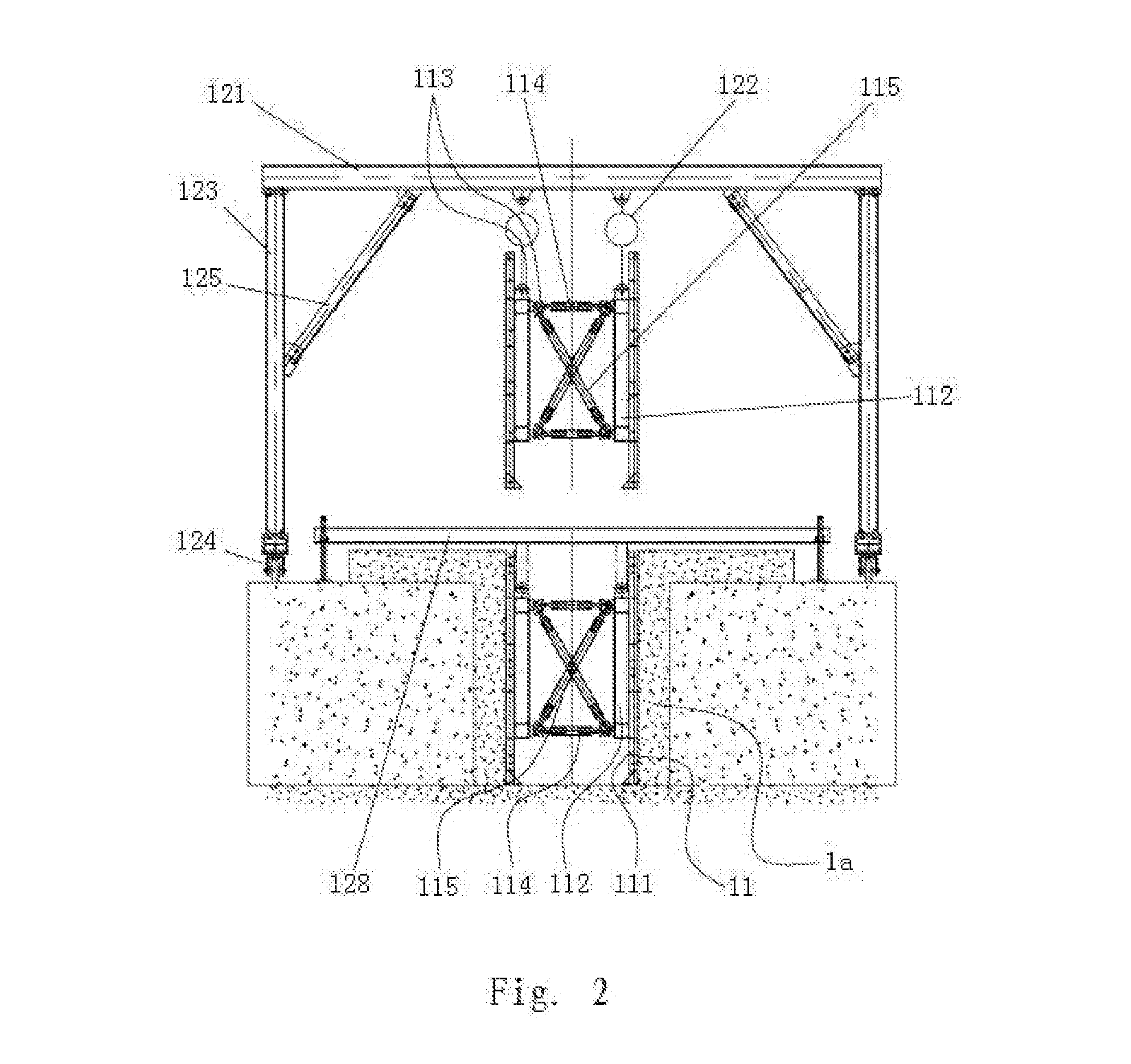Currently, in construction of concrete structures of a subway
station, it is most often to employ a construction method using wood formwork combined with respective bracket system, which leads to drawbacks such as few formwork cycle times, high cost, huge labor amount, long construction duration, etc.
(1) In a conventional construction process of guide walls for underground continuous walls, mounting is usually performed using a wood formwork, the overall rigidity of which is reinforced by using steel pipes, square timber, shaped steel and the like as back ribs, and then a rod member is used as a support so as to fix the formwork in place. The problem is that, since the components are all separated, every
single component needs to be assembled and disassembled for each use, and is then moved manually to a next working site for a next cycle operation. Some of the continuous walls have great lengths, for example up to 1000 meters, and the construction duration is short. In such cases, if a wood formwork is used according to conventional processes, a large amount of material is to be used, and a labor-intensive and time-consuming assembling and disassembling is to be performed. Moreover, a common formwork is usually small, and therefore high accuracy is required in mounting and calibrating.
(2) In a conventional formwork for concrete support beam, mounting is usually performed using artificial wood formwork alone or combination of steel formwork and counter rod. When a wood formwork is used for mounting, since expansion joints of a wood formwork are big,
slurry leakage is likely to occur, flatness of the concrete is difficult to achieve, stability of the
support system is poor, the concrete quality is hard to control, and the formwork cannot be dissembled in advance and is used in a large number. When small steel formworks are used for mounting, since a plurality of them are pieced together, the seamings are difficult to treat, thereby increasing labor intensity. In a conventional formwork process, it is required to pre-burry plastic tubes of counter rod in the
steel bar reinforced concrete in large numbers. The procedure is complicated, and usually leads to spatial interference between counter rods and the steel bars in the concrete, poor reliability, and high
aspect ratio. In such cases, the formwork itself tends to twist, does not have sufficient strength to be a strong support, and is subject to lateral torsion when bearing
high pressure after the concrete is cast. In the case of an excessive deformation, the requirement of a support beam cannot be met, and even crack and
slurry leakage could occur at the connecting point and thus inclined supports need to be provided at two sides of the support beam formwork.
(3) In the concrete construction of conventional station sidewalls and floor slabs, full-framing method is used combined with wood formwork. In this process, it is needed to build a steel-
pipe bracket in the foundation pit with a same width, and piece the wood formwork together piece by piece. The piecing of the steel-
pipe bracket requires huge amount of labor and takes a long period of time. In the mounting of a wood formwork, operation space is limited,
working environment is bad and piecing of the formwork is slow. Construction quality of the formwork and steel-
pipe bracket could hardly be ensured and reliability is low. When the concrete is cast, deformation of sidewalls and
slurry leakage of the concrete are likely to occur. It takes multiple operations to piece the wood formwork together, resulting in poor flatness of the concrete surface and possible
height difference across the seaming. As for the components for cycle use, such as wood formwork and its bracket, the disassembly process is
time consuming, the cycle period is long, and the components are often used in a large quantity. Furthermore,
high skill and intensive labor and thus a large number of workers is required, with the disadvantages of low efficiency and high labor cost.
 Login to View More
Login to View More  Login to View More
Login to View More 


